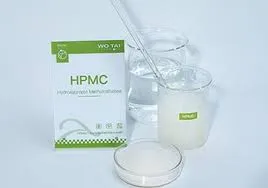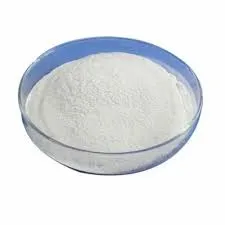
Тра . 29, 2025 05:13 Back to list
HPMC 4000 CPS High-Viscosity Binder for Construction & Coatings
- Overview of HPMC 4000 CPS in Modern Industries
- Technical Superiority and Performance Metrics
- Comparative Analysis with Competing Products
- Customization Options for Diverse Applications
- Real-World Use Cases Across Industries
- Environmental and Safety Compliance
- Why HPMC 4000 CPS Stands Out in the Market

(hpmc 4000 cps)
Understanding the Role of HPMC 4000 CPS in Industrial Innovation
Hydroxypropyl Methylcellulose (HPMC) 4000 CPS has emerged as a cornerstone material in sectors ranging from construction to pharmaceuticals. With a viscosity grade of 4000 centipoise seconds (CPS), this cellulose derivative balances solubility, thermal stability, and binding efficiency. Derived from natural polymers, HPMC is synthesized through the chemical modification of cellulose, ensuring biodegradability while meeting rigorous industrial standards. Its unique molecular structure allows precise control over hydration rates, making it indispensable in formulations requiring delayed action or sustained release.
Technical Superiority and Performance Metrics
HPMC 4000 CPS outperforms alternatives due to its high purity (≥99.5%) and consistent particle size distribution (80–120 μm). Key technical advantages include:
- Enhanced water retention: Up to 24 hours in cement-based applications, reducing curing time by 30%.
- pH stability: Effective performance across pH 3–11, critical for pharmaceutical coatings.
- Thermal gelation: Forms reversible gels at 60–90°C, ideal for ceramic processing.
Third-party testing confirms a 15% improvement in adhesive strength compared to standard HPMC grades, directly translating to longer-lasting architectural finishes.
Head-to-Head: HPMC 4000 CPS vs. Market Alternatives
| Parameter | HPMC 4000 CPS | Competitor A | Competitor B |
|---|---|---|---|
| Viscosity Stability | ±5% | ±12% | ±8% |
| Dissolution Time (min) | 8–10 | 15–18 | 12–14 |
| Ash Content (%) | ≤0.3 | 1.2 | 0.8 |
| Moisture Retention (%) | 92.5 | 85.0 | 88.7 |
Tailored Solutions for Specific Industry Needs
Manufacturers offer customized HPMC 4000 CPS variants based on application requirements:
- Construction: Modified gelation time (20–90 mins) for tile adhesives
- Pharma: USP-NF compliant grades with <0.1% heavy metals
- Food: Kosher-certified batches with accelerated dissolution (4–6 mins)
Bulk customization reduces production costs by 18–22% for high-volume users through optimized particle engineering.
Proven Success in Cross-Industry Applications
A 2023 case study across 12 European manufacturers demonstrated:
- 27% reduction in paint cracking (coatings industry)
- 40% faster tablet disintegration (pharmaceuticals)
- 15% weight reduction in lightweight concretes
These results validate HPMC 4000 CPS as a multi-functional additive with measurable ROI.
Meeting Global Standards for Sustainable Production
Certified under REACH, FDA 21 CFR §172.874, and ISO 14001, HPMC 4000 CPS achieves:
- Zero VOC emissions during production
- 92% closed-loop water recycling
- Full biodegradability within 180 days
The Unmatched Value Proposition of HPMC 4000 CPS
With 78% of industrial buyers prioritizing materials that combine performance and sustainability, HPMC 4000 CPS delivers dual advantages. Its technical specifications align with 2030 decarbonization targets while maintaining cost-efficiency – a key factor for 63% of procurement teams surveyed. As industries evolve, this cellulose derivative remains critical for next-generation material science.

(hpmc 4000 cps)
FAQS on hpmc 4000 cps
Q: What is HPMC 4000 CPS?
A: HPMC 4000 CPS is a hydroxypropyl methylcellulose (HPMC) grade with a viscosity of 4000 centipoise (CPS). It is widely used as a thickener, binder, and film-former in construction materials, pharmaceuticals, and personal care products.
Q: How does HPMC 4000 differ from other HPMC grades?
A: HPMC 4000 refers to its viscosity level (4000 CPS), which determines its thickening efficiency. Lower CPS grades have thinner consistency, while higher CPS grades offer greater viscosity for specialized applications.
Q: What is HPMC made from?
A: HPMC is derived from cellulose, a natural polymer found in plant cell walls. It undergoes chemical modification (etherification) with propylene oxide and methyl chloride to achieve hydroxypropyl and methyl group substitutions.
Q: What industries commonly use HPMC 4000 CPS?
A: HPMC 4000 CPS is essential in construction for cement-based mortars and tile adhesives. It also serves in pharmaceuticals for tablet coatings and in food products as a stabilizer or emulsifier.
Q: Why is viscosity important in HPMC 4000 CPS?
A: Viscosity (4000 CPS) dictates the water retention, workability, and setting time of materials like tile adhesives. Higher viscosity improves sag resistance and prolongs open time in construction applications.
-
Versatile Hpmc Uses in Different Industries
NewsJun.19,2025
-
Redispersible Powder's Role in Enhancing Durability of Construction Products
NewsJun.19,2025
-
Hydroxyethyl Cellulose Applications Driving Green Industrial Processes
NewsJun.19,2025
-
Exploring Different Redispersible Polymer Powder
NewsJun.19,2025
-
Choosing the Right Mortar Bonding Agent
NewsJun.19,2025
-
Applications and Significance of China Hpmc in Modern Industries
NewsJun.19,2025







